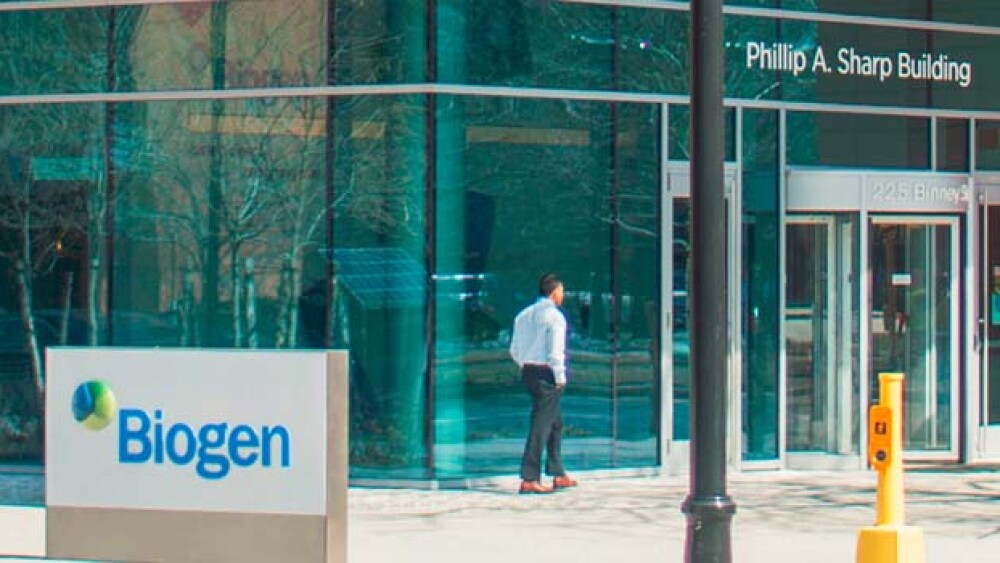The current Spinraza cost is $750,000 for the first year and $375,000 for every year after for the life of the patient. It is approved for all forms of SMA.
Biogen’s Spinraza cost is under controversy.
Biogen’s Spinraza (nusinersen) is currently the only approved drug for infants with spinal muscular atrophy (SMA). SMA is a rare, autosomal recessive neuromuscular disease characterized by the degeneration of alpha motor neurons in the spinal cord. This results in progressive muscle weakness and paralysis. According to the Orphanet Journal of Rare Diseases, the estimated incidence is 1 in 6,000 to 1 in 10,000 live births.
The current Spinraza cost is $750,000 for the first year and $375,000 for every year after for the life of the patient. It is approved for all forms of SMA, types 0 through 5.
The Institute for Clinical and Economic Review (ICER), a drug-pricing watchdog organization, issued a Final Evidence Report and Report-at-a-Glance assessment comparing the drug’s effectiveness and value and its price. It also evaluated a likely competitive product not-yet-approved, Novartis/AveXis’ Zolgensma. Zolgensma has dazzled in Phase III trials and is likely to be approved by the U.S. Food and Drug Administration (FDA) in the last half of this year. At this time, it is only for patients with Type 1.
What Reports Have To Say About Spinraza Cost?
Although filled with quite a few exceptions and complicated rationales, the report ultimately believes that Spinraza cost is too expensive for what it’s worth and that Zolgensma, which doesn’t have a price yet, probably will too.
“Both Spinraza and Zolgensma dramatically improve the lives of children with SMA and that of their families,” stated David Rind, ICER’s chief medical officer. “However, the current price of Spinraza far exceeds common thresholds for cost-effectiveness. The price of Zolgensma is not yet known, but there has been public discussion of prices above commonly accepted cost-effectiveness thresholds as well. These treatments will be covered by U.S. insurers regardless of the pricing, but the ripple effect of pricing decisions like these threatens the overall affordability and sustainability of the U.S. health system.”
The ICER report took into account a dizzying range of factors, including clinical benefits and economic value, “including the ability of patients to gain dignity and independence even from very small improvements in motor function, and broader effects on families, including greater freedom, reduced stress, and lower financial burden related to transportation and other costs. Council members also unanimously recognized that Zolgensma, administered in a one-time dose, offers less complexity than Spinraza.”
Keeping in mind that ICER’s report doesn’t have any binding effect on the FDA, insurers or the companies themselves, the report calculated that Spinraza cost for patients with presymptomatic SMA should be between $72,000 and $130,000 for the first year of treatment and between $36,000 and $65,000 for each successive year.
They also calculated an alternative price based on “100,000-$150,000 per Life Year Gained (LYG),” which would be $83,000 to $145,000 for pre-symptomatic patients in the initial year and $41,000 to $72,000 for each successive year.
They didn’t make a similar vote on Zolgensma because it hasn’t been approved and, as such, doesn’t have a price, but taking into consideration that Zolgensma will supposedly be a one-and-done therapy requiring no follow-up treatments, they suggest the price should be between $710,000 and $1.5 million per treatment.
Perhaps not surprisingly, the companies involved disagree. Biogen told Xconomy, that ICER “appropriately acknowledges the substantial health benefits of [nusinersen]” and the “significant difference in robustness and quality of evidence” between nusinersen and Zolgensma, but also pointed out that to date, Zolgensma had only been tested in 15 patients with a 2.5-year follow-up, while Spinraza has been evaluated in more than 300 patients for up to six years, and the ICER report didn’t take that into consideration. In addition, Biogen recently noted that more than 6,600 infants, children and adults have been treated with Spinraza worldwide, but added nothing regarding Spinraza cost.
Novartis, for its part, questioned ICER’s methodology, telling Xconomy that ICER’s methodology is designed around the “status quo of chronic care management and cannot possibly capture the full benefits” of a single-dose gene therapy. Novartis also pointed out that “multiple stakeholders,” including NICE, the UK’s drug pricing authority, have been looking at gene and cell therapies to “create more relevant models to assess potentially curative treatments.”
And Dave Lennon, president of AveXis, told Xconomy that Novartis is “working with payers to rethink established payments models with pay-over time options.” He added, “Chronic lifetime treatments are costing the healthcare system tens of millions of dollars over a patient’s lifetime. One-time, potentially curative gene therapies require our healthcare system to be just as innovative on the payment side.”
SMA type I, the severest form, is almost always fatal by two years of age, with a 50% mortality rate by 7 months and a 90% mortality rate by 12 months. A 2009 study found that with nutritional and respiratory care, a greater percentage of those patients were living beyond 2 years of age. Patients with Types II and III typically live into adulthood and could potentially have a normal life expectancy, although with a great deal of healthcare services. But now, with Spinraza and potentially Zolgensma, those patients have a chance of living a full, normal life. It’s hard to put a price on that.





